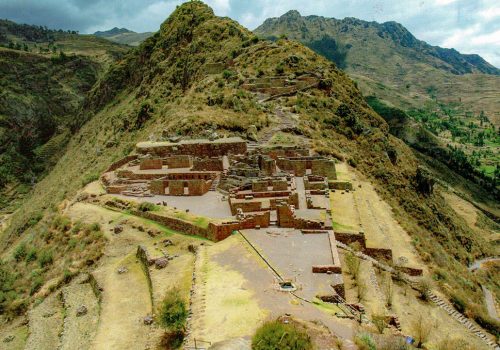Sacred Valley Of The Incas VIP
Description
The Sacred Valley of the Incas extends along the Vilcanota River (the same river that takes the name of Urubamba or Willcamayu). It covers the area between the towns of Písaq and Ollantaytambo and is located at 2850 m.a.s.l. (approx).
Included
- Hotel pick-up
- Professional guide
- Tour bus
- Buffet Lunch
Excluded
- Tourist Ticket - Entrance fee to the archeological sites
RECOMMENDED TO BRING
- Camera
- Comfortable clothes and shoes
- Poncho or waterproof clothing (espcially from December-March)
- Small backpack
- Snacks and water
- Sunglasses, sun block and a hat
Itinerary
All tours can be done privately where you can set the departure time, add in or remove sites and most importantly go at your own pace. Please ask us for more information about availability and prices.
-
6:30 am
Our excursion starts with a pick-up service from your hotel between 6:30 a.m. – 6.45 a.m. in our tourist bus. We will visit the following places:
-
Chinchero
Know as a very important center for agricultural production. We will visit the church that also is home to a Cusquenian school as well as various decorative elements that maintain their originality. Every Sunday local produces sell their produce at the local market, where bartering is still a common practice.
-
Maras
Located to the west of Cusco at 3300 m.a.s.l. where you can see the Urubamba mountain range and the snowy peaks of "La Veronica" (5682 m.a.s.l.) and the "Chikon" (5530 m.a.s.l.). Settlement took place here during the Spanish conquest when the Inkan nobles were stripped of their palaces in Qosqo (Cusco) forcing them to move and settle in smaller towns like Maras. The town has a church made of adobe bricks with typical religious architecture of the village.
-
Moray
Located about 7 km southwest of Maras, it is the only archaeological site of its kind in the region. It is made up of depressions or gigantic natural holes in the surface of the land that were used to build terraces or agricultural terraces with their respective irrigation channels. It is therefore a prototype of a greenhouse or biological experimental station which was quite advanced for its time that helped the andean people to domesticate many varieties of potatoes and among other crops such as corn, quenoa and faba beans.
-
Salineras
Also known as the "salt mines" is located to the northwest of the town of Maras and is made up of some 3000 small wells with an average area of about 5 m². During the dry season they are filled or "irrigated" every 3 days with salt water that emanates from a natural spring located in the upper part of the wells so that when the water evaporates, the salt contained in it gradually solidifies. The salt is then pounded & granulate and packaged into plastic sacks and sent to the regional markets. Today the salt is iodized, making its consumption unharmful.
-
Urubamba
Our lunch stop where you will be able to try Cusquenian cuisine in our all-you-can-eat buffet menu and more. We will then continue to our last place of visit, Ollantaytambo, known for its agricultural terraces, religious temples and ceremonial water fountains.
-
Ollantaytambo
We will visit the archaeological ruins of Ollantaytambo which was a religious site and a resting place for the ancient Peruvians.
-
Pisaq
Our last stop is PISAQ, a picturesque village of mestizo and colonial physiognomy; located in the province of Calca, 32 kilometers from the Imperial City. We will visit the imposing archeological site, its terraces and ceremonial places.
-
End
We will return to Cusco and you dropped off close to the Plaza de Armas.
Book This Tour
Book 1 Month ahead and receive a 10% discount!





